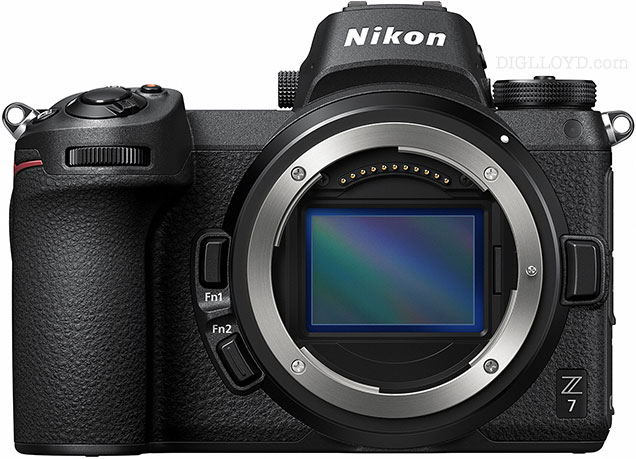Nikon Z7: Optical Design vs the Large-Diameter Z-Mount and Short 16mm Flange Focal Distance
Get Nikon Z at B&H Photo.
I reached out to an optical expert about what Nikon’s new lens mount good for optical design:
Shorter flange focal distance (FFD) and a larger mount diameter helps a lot in terms of physical dimensions of a lens.
The shorter the flange back is, the smaller the diameter of a lens elements can be designed assuming same chief ray angle and refractive power. That means reduce length, diameter and weight can be reduced without loss of light.
Of course the FFD should not go arbitrarily short. Otherwise there will be high requirements on the cleanliness conditions of the rear lens elements. Any dust particle would be mapped 1:1 on the sensor, at least when stopped down.
Apart from the physical benefits, a shorter FFD helps for flattening of the field curvature for the same reason as described above.
Depending on the underlying chief ray angle, a shorter FFD often allows for “more symmetric” lens designs (i.e. front and rear part of a lens rather symmetric, as e.g. present in a Zeiss Biogon design).
The more symmetric the lens, the better distortion is controlled and reduced. This is in particular true for wide angle lenses where distortion is always hard to correct for.
Finally, since the Nikon Z7 mount is 2mm shorter than Sony E mount,all DSLR lenses from Nikon (FFD of 46.50 mm) down to Sony (FFD of 18.00 mm) can still be used on the Z7 with a lens adapter [diglloyd: at least physically speaking].
DIGLLOYD: seems like Nikon made a really smart move, but also that the visibility of dust is likely to be slightly higher than with Sony (18.00mm flange focal distance), at least for lenses whose elements are at lens rear.
The response also implies that it should be possible to make a lens even faster than the Nikon NIKKOR Z 58mm f/0.95 S Noct—I’m guessing f/0.8 is possible.
Brian Caldwell (designer of the Coast Optics 60mm f/4 UV-VIS-IR APO-Macro writes:
Optically, the mount just needs to be out of the way and not impose any constraints. Its desirable to be able to design lenses with a short BFL. This permits relatively easy correction of field curvature and astigmatism using elements close to the image plane.
The field curvature thing is particularly important, because it helps to eliminate or at least reduce the need for high index glasses in the positive elements. The problem with high index crown glass - e.g. lanthanum crowns - is that it has negative secondary spectrum, which is the opposite of what you want for great color correction. So, the short backfocal length (flange focal distance) frees you up to use low index crown glass for the positive elements, AKA ED or abnormal partial dispersion glass. This has positive secondary spectrum, which helps color correction tremendously.
So, bottom line, a short flange distance with large throat permits short BFL, which in turn permits good astigmatism and field curvature correction without the need for high index crown glass, which in turn permits relatively straightforward apochromatic or superachromatic color correction. Toss in an asphere or two to control any residual spherical aberration or maybe coma and you've basically got a large-aperture lens that can approach the diffraction limit.
DIGLLOYD: sounds really promising—even though Canon’s choice of 20mm flange focal offset is less good and the Canon mount is 1mm less wide, it’s probably plenty good compared to DSLR mounts.

























